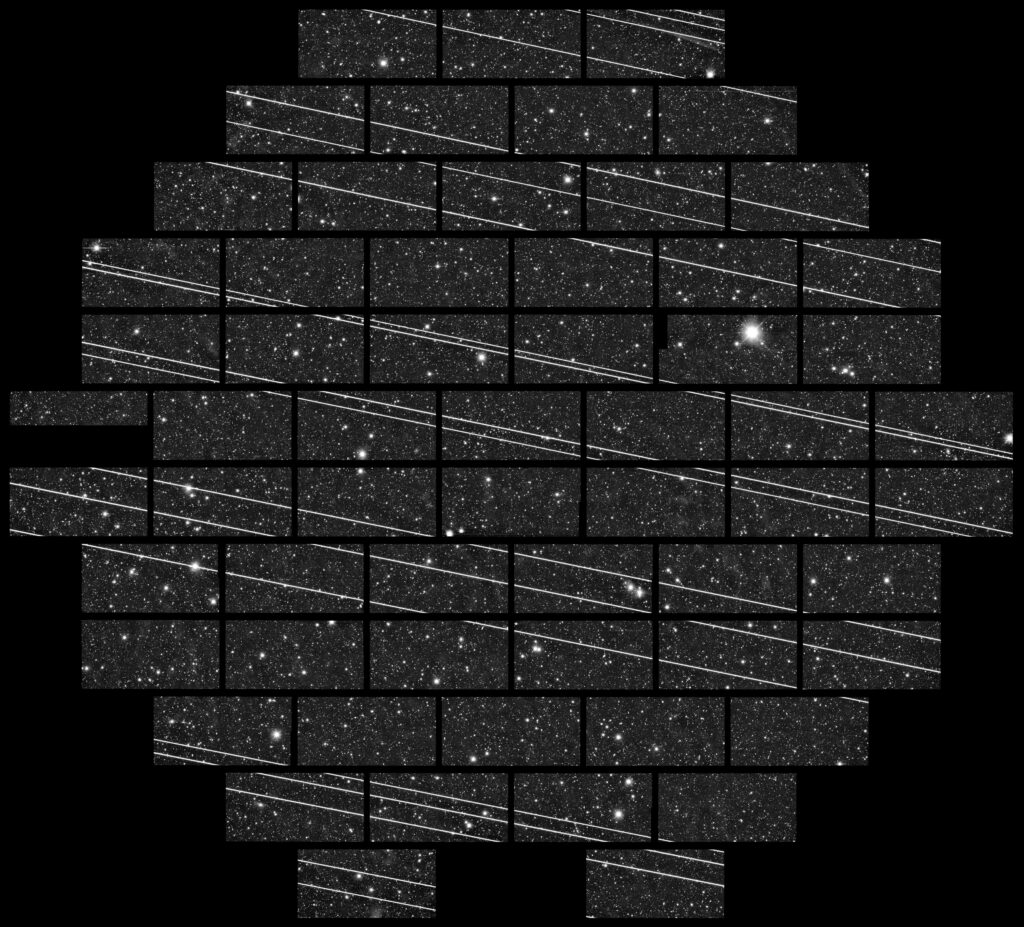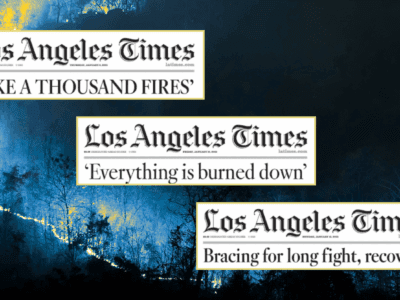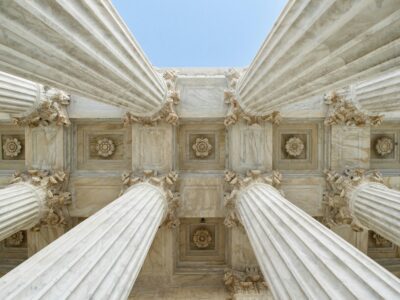The Dark and Quiet Skies Campaign
What does Space Law have to do with environmental law? Satellites pollute in more ways than you think.

When you walk outside at night, do you ever wonder how many stars you can see? For most of human history, this would have been a foolish question. The night sky was filled with stars. Today, though, in any major city you may be lucky to see only a handful. For years, astronomers have warned that we are losing the night sky to terrestrial light pollution. In just the past decade, though, this concern has shifted from the Earth’s surface to space.
The remarkable recent increase in satellites offers the enticing benefits of universal cell phone and internet access, but it comes at a cost. The Dark and Quiet Skies Campaign works to highlight this cost, spurring a global campaign to preserve the cultural, scientific, and environmental values of the night sky.
For starters, though, why is an environmental law professor writing about this? This semester, I’m teaching Space Law for the first time. The field has always been of interest to me because of its close overlap with international environmental law, natural resources law, and property theory, and it has turned out to be incredibly interesting. My specific interest in dark and quiet skies was piqued by a recent small workshop with astronomers and law professors on this issue.
To be sure, astronomers’ concerns over light pollution are not new. Tucson, Arizona, has long had an outdoor lighting code to ensure dark skies for the nearby Kitt Peak Observatory. What is new is the scale and speed of satellite deployment in low earth orbit. Say what you will about Elon Musk, but SpaceX has changed the satellite business model by reducing the cost of launching by an order of magnitude. Now not only can start-ups afford to put satellites in space but also the recently deceased (for the low low price of $4,995).
The other big change has been the rise of what are called “satellite constellations.” You’ve likely heard of Starlink, the service that makes internet available everywhere on the planet. This works because there are thousands of Starlink satellites circling the globe, such that once one dips below the horizon the signal on your phone can be maintained by another one that has now come into contact. There are currently over 8,000 Starlink satellites in orbit. SpaceX has filed permits to put up an additional 30,000 satellites. Its competitor, Amazon’s Kuiper, has filed for over 3,000 satellites.
But what’s the big deal? In my backyard in Santa Barbara, I enjoy spotting an occasional satellite arcing across the night sky, its identity clearly not a plane because it doesn’t blink. But my sightings are only occasional. That, unfortunately, is not the case for optical telescopes.
Given the number of satellites currently in orbit, this translates to thousands of objects that, while faint to the human eye, can produce hundreds of contaminating streaks per night across telescope images. For example, the image above is from a four-meter telescope funded by the NSF showing what astronomers see from recently launched satellites. It can be hard to observe some of the stars apart from the satellite streaks. Much the same is happening with radio telescopes, whose detection of signals many light years away is being obstructed by interference from satellites communicating at the same or adjacent wavelengths, so-called “radio pollution.” The implications for astronomical and astrophysics research are serious.
Can the law address this issue? Domestic law isn’t immediately helpful. Nuisance doesn’t seem on point. Light streaks from an object a thousand miles above the Earth isn’t the same as bright lights from your neighbor’s pool deck, much less whether the satellites even represent unreasonable behavior. Federal law prohibits obtrusive space advertising (you can’t light up a giant Drink Diet Coke! sign on the moon) but satellite streaks are quite different. The FCC does ask operators of satellites to coordinate with the National Science Foundation, which funds the U.S.’s national optical and radio observatories, but it is surely not a high priority for the agency.
The best analysis of international law comes from a report by a study group of the International Institute of Space Law. The 1967 Outer Space Treaty operates as the constitution for space activities and there are provisions that potentially could cover this situation. Article I ensures “freedom of scientific investigation in outer space.” Article III mandates parties to “carry on activities in the exploration and use of outer space” that promote international cooperation and understanding. Article VI makes state parties responsible for outer space activities by their nongovernmental entities in compliance with the Treaty.
Article IX commits parties to “conduct all their activities in outer space, including the Moon and other celestial bodies, with due regard to the corresponding interests of all other State Parties to the Treaty.” If it has reason to believe an activity “would cause potentially harmful interference with activities of other States Parties in the peaceful exploration and use of outer space…it shall undertake appropriate international consultations.” There is neither definition of “harmful interference” nor what constitutes “international consultations.”
Whether these provisions apply to the quiet and dark skies campaign would make for a great exam question. Does interference with ground-based astronomy interfere with freedom of scientific investigation or international understanding? Does it constitute a lack of “due regard”? What level of consultation would be adequate? And is ground-based astronomy even covered by the Outer Space Treaty?
The question of whether the Treaty could apply to the dark skies problem is less relevant, however, than whether it likely would apply in practice. There are no enforcement or dispute settlement provisions in the Treaty, thus a State Party at a minimum would need to make this a high profile issue. Given the private sector rush in getting satellites launched into low earth orbit, this seems low probability. The simple fact is that no treaty or national law clearly governs satellite brightness.
There was a lawsuit in 2022, where astronomers sued the FCC, arguing that it should have conducted an environmental review under the National Environmental Policy Act before licensing Starlink’s satellites. The court ruled, however, that the FCC had behaved appropriately.
Thinking outside the box, perhaps one could consider a human rights approach. Should there be an individual human right to a pristine night sky? A collective human right to conduct astronomical research? These may seem far-fetched, but our connection to the stars over millennia has inspired myths, guided navigation, and spurred science. At what point does saturation of orbital shells with satellites mean this is lost for future generations? Spain and Chile have proposed a “right to starlight” at UNESCO meetings but it remains aspirational (you can check out the 2007 La Palma Declaration for what this might look like).
One useful model might be found in the campaign to combat underwater sound pollution. Animal rights groups concerned over the impacts of active sonar and noise from commercial shipping on marine mammals campaigned to change how the problem was viewed. Rather than “an unfortunate side effect” of regular shipping operations, advocates argued that this negative externality was a real problem, an “acoustic smog,” that required action. One result was guidelines from the International Maritime Organization for the reduction of underwater noise from commercial shipping, which has resulted in management actions such as seasonal restrictions on sonar and speed limits for ships near areas rich in marine mammal life. The lesson and challenge for the Dark and Quiet Skies campaign are clear – how to change the perception of what is currently viewed as an unfortunate side effect of satellite constellations into a form of night sky visual pollution.
The International Dark-Sky Association was founded in 1988 to highlight the issue of urban light pollution. It has successfully lobbied for shielded street lighting and what are called “dark sky reserves.” Until the rise of satellite constellations, their focus had been on terrestrial light sources. But 2019, when the first Starlink satellites launched and astronomers saw bright satellites streaks on their images, proved a turning point.
The Association and its allies have been effective in raising the profile of the issue, and the greatest success to date has not been through law but voluntary actions. SpaceX has worked with astronomers to test mitigation strategies such as experimental coatings to reduce reflectivity and deployable visors that shade antennas. The International Astronomical Union has called for satellites not to exceed a magnitude of 7 on the scale that measures brightness of celestial objects (magnitude 7 being a level not visible to the naked eye). Amazon has also agreed to reduce the brightness of its Project Kuiper satellites through design changes and attitude maneuvering. Dimming satellites in the night sky is still a new strategy, however, and much remains to be learned.
As the Dark and Quiet Skies Campaign evolves, here are some key issues to watch:
- Will other satellite operators follow the lead of Starlink and Project Kuiper and adopt voluntary norms? Will these norms be adequate?
- Will the European Union mandate brightness standards for satellites in its Space Act currently under development, thus creating an international standard?
- Will a “right to starlight” or a “right to clear and quiet skies” gain sufficient public interest to spur development of standards at the international or domestic level?
- And how should we balance the interests of global broadband users against those of astronomers?
The Dark and Quiet Skies Campaign serves us well to remember that the governance of outer space is not simply about money and geopolitics. The values of science and culture also have a place. As you follow the track of a satellite across the night sky this week, consider what kind of sky and scientific legacy we want to leave for future generations.







For the people up in the bleachers … why do satellites have lights anyway? Don’t they navigate with radar or some other tech?
I am with you on the issue of extra lighting – I hope we get somewhere on it.
It is reflected light from the sun.